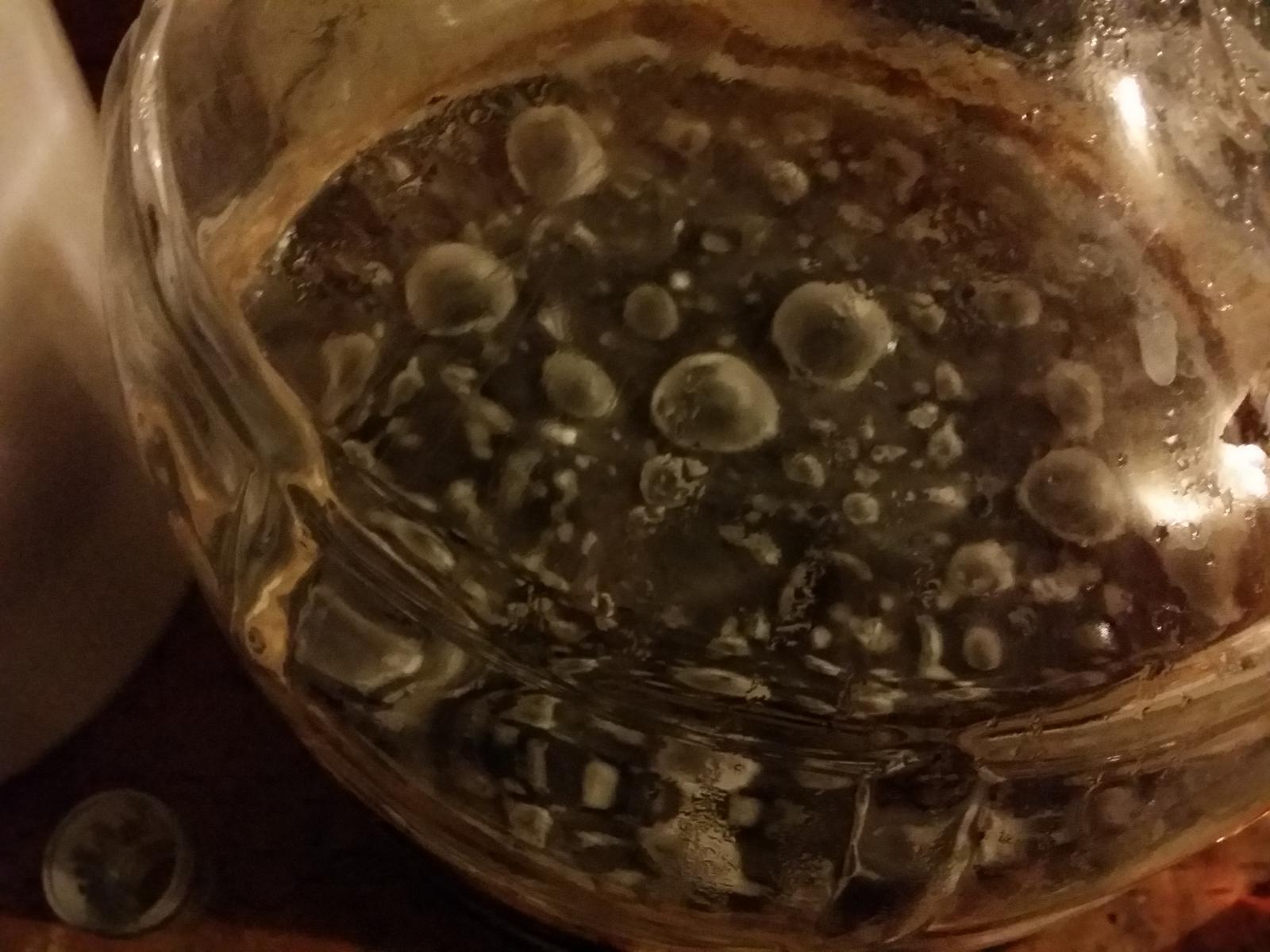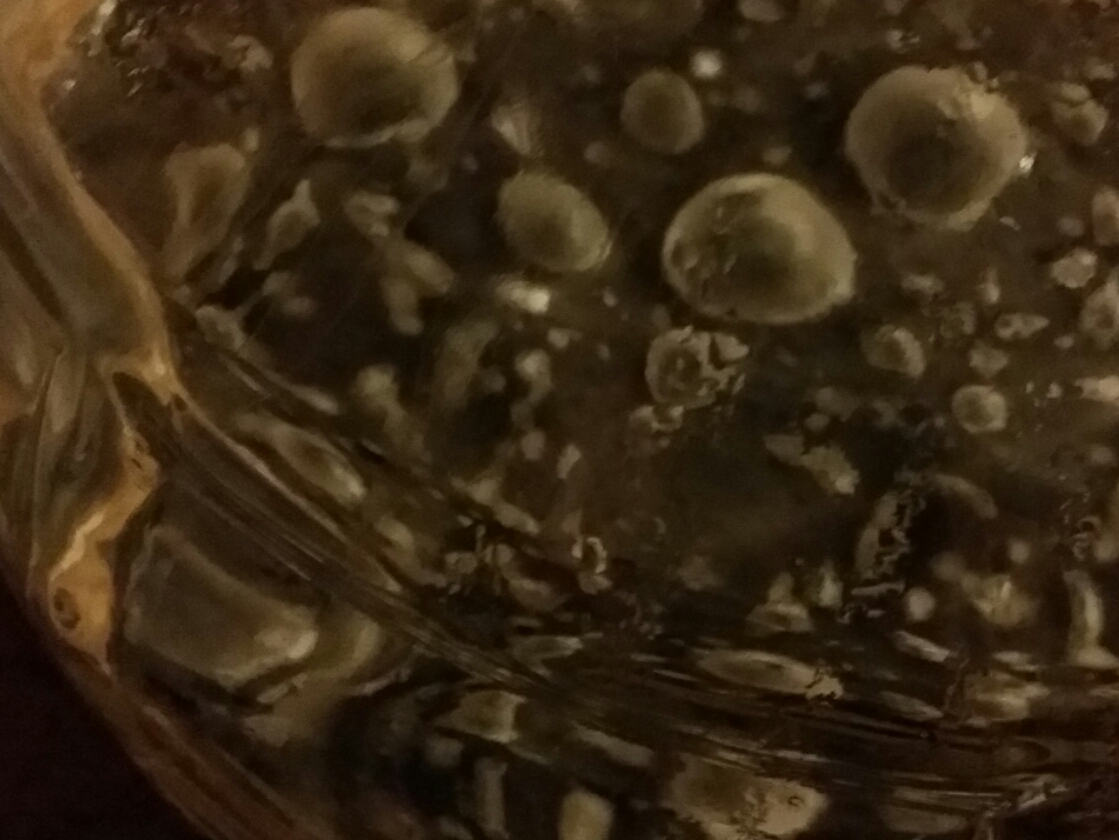eryk4381
Well-Known Member
I have a mystery beer I made from grains I had leftover and its down to 1.008 for FG but I left it a few days before kegging and now I have this odd bubbleness on top.







I have a mystery beer I made from grains I had leftover and its down to 1.008 for FG but I left it a few days before kegging and now I have this odd bubbleness on top.
That's definitely got something other than yeast working.
- If you like sours, let it ride.
- If you keg and don't like sours, rack now, chill, force carb and consume with a degree of haste.
- If you bottle and don't like sours, rack now, and make sure you do the warm conditioning under/behind a blast screen...
Cheers!
Lactic acid bacteria are Gram-positive, non–spore-forming rods (or cocci), and they are obligate fermenters. An obligate fermenter is a microorganism that must ferment a carbohydrate source. They do not grow aerobically. Lactic acid bacteria include Lactobacilli and Pediococci.
by Dr. Brian A. NummerBrewing with Lactic Acid Bacteria
Lacto can ferment when it is cool but it requires oxygen which should be absent in the primary as the yeast would have consumed what was dissolved in the beer and then produced enough CO2 to push the rest of it out.
Even the quote you use says it doesn't grow aerobically. Lacto prefers to be without O2.
That doesn't look like Lacto to me. It could be, but I would go for some kind of Brett if I were to guess.
Advice that has been given is good:
- Taste it, if OK decide what to do. If bad; dump.
- Either continue to ferment for 6 to 12 months, or keg, cool, and drink.
Lacto may prefer low levels of O2 but according to that study it does require some. I wasn't trying to identify the infection as lacto but was answering the question directly above my answer.
All I was doing was pointing out an inconsistency in your post, I was not really commenting on the content:
Your post:
"Lacto can ferment when it is cool but it requires oxygen"
Your reference:
"Lactic acid bacteria ........ They do not grow aerobically."
Despite their complexity, the whole basis of lactic acid fermentation centres on the ability of lactic acid bacteria to produce acid, which then inhibits the growth of other non-desirable organisms. All lactic acid producers are micro-aerophilic, that is they require small amounts of oxygen to function. Species of the genera Streptococcus and Leuconostoc produce the least acid. Next are the heterofermentative species of Lactobacillus which produce intermediate amounts of acid, followed by the Pediococcus and lastly the homofermenters of the Lactobacillus species, which produce the most acid. Homofermenters, convert sugars primarily to lactic acid, while heterofermenters produce about 50% lactic acid plus 25% acetic acid and ethyl alcohol and 25% carbon dioxide. These other compounds are important as they impart particular tastes and aromas to the final product. The heterofermentative lactobacilli produce mannitol and some species also produce dextran.
Even the quote you use says it doesn't grow aerobically. Lacto prefers to be without O2.
That doesn't look like Lacto to me. It could be, but I would go for some kind of Brett if I were to guess.
Advice that has been given is good:
- Taste it, if OK decide what to do. If bad; dump.
- Either continue to ferment for 6 to 12 months, or keg, cool, and drink.
I've found other articles about lacto, one of which says that the products of lacto infections include alcohol and CO2 while the other says that lacto produced no CO2. Am I confused? For sure. Are the authors of the articles confused? It would seem so.
It does seem that the presence of CO2 dissolved in the beer restricts the growth of lactobacillus but the link to how or even whether that is the factor in beer is very tenuous. Maybe somewhere someone has studied it but finding the info is difficult.
Enter your email address to join: